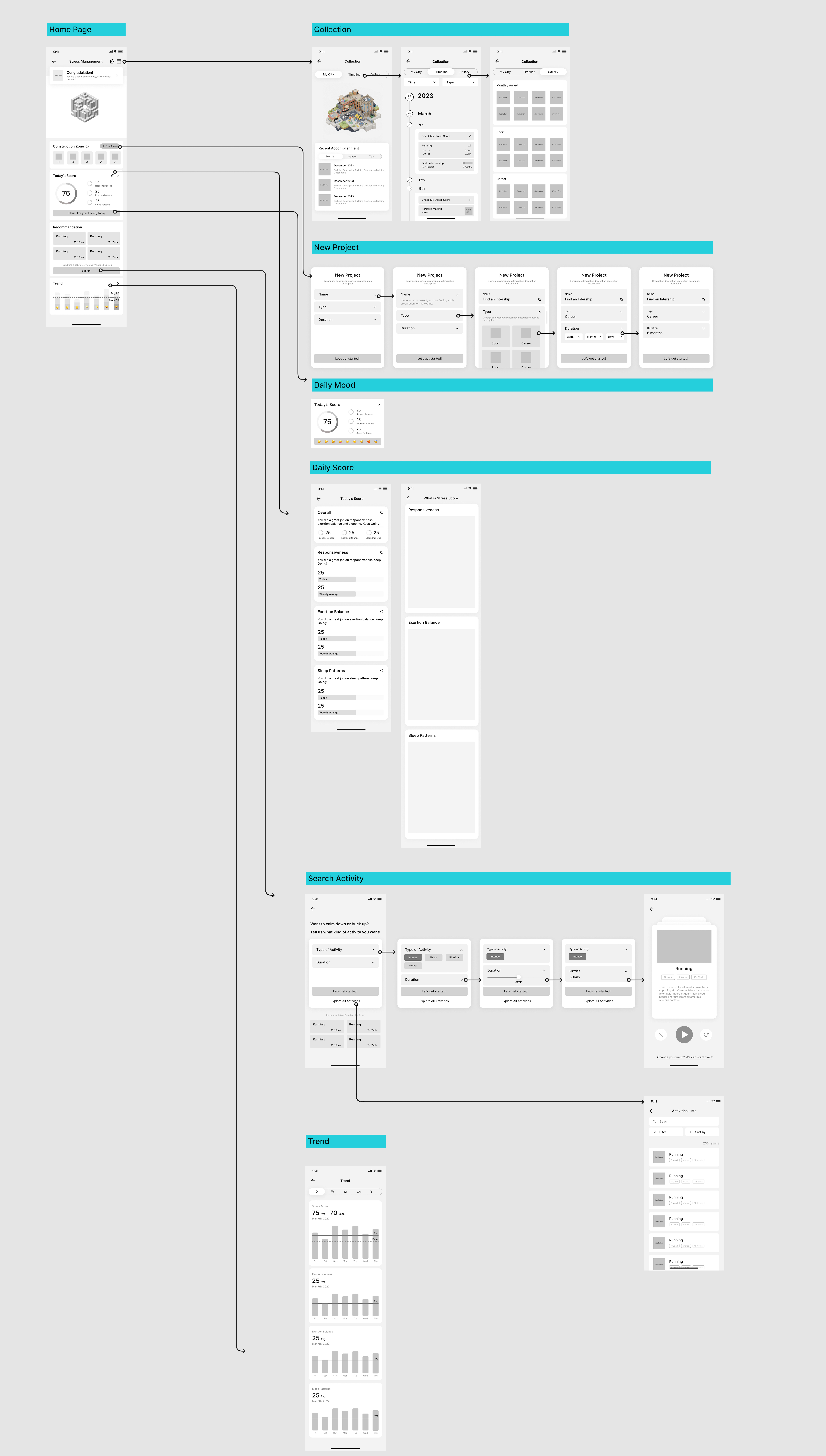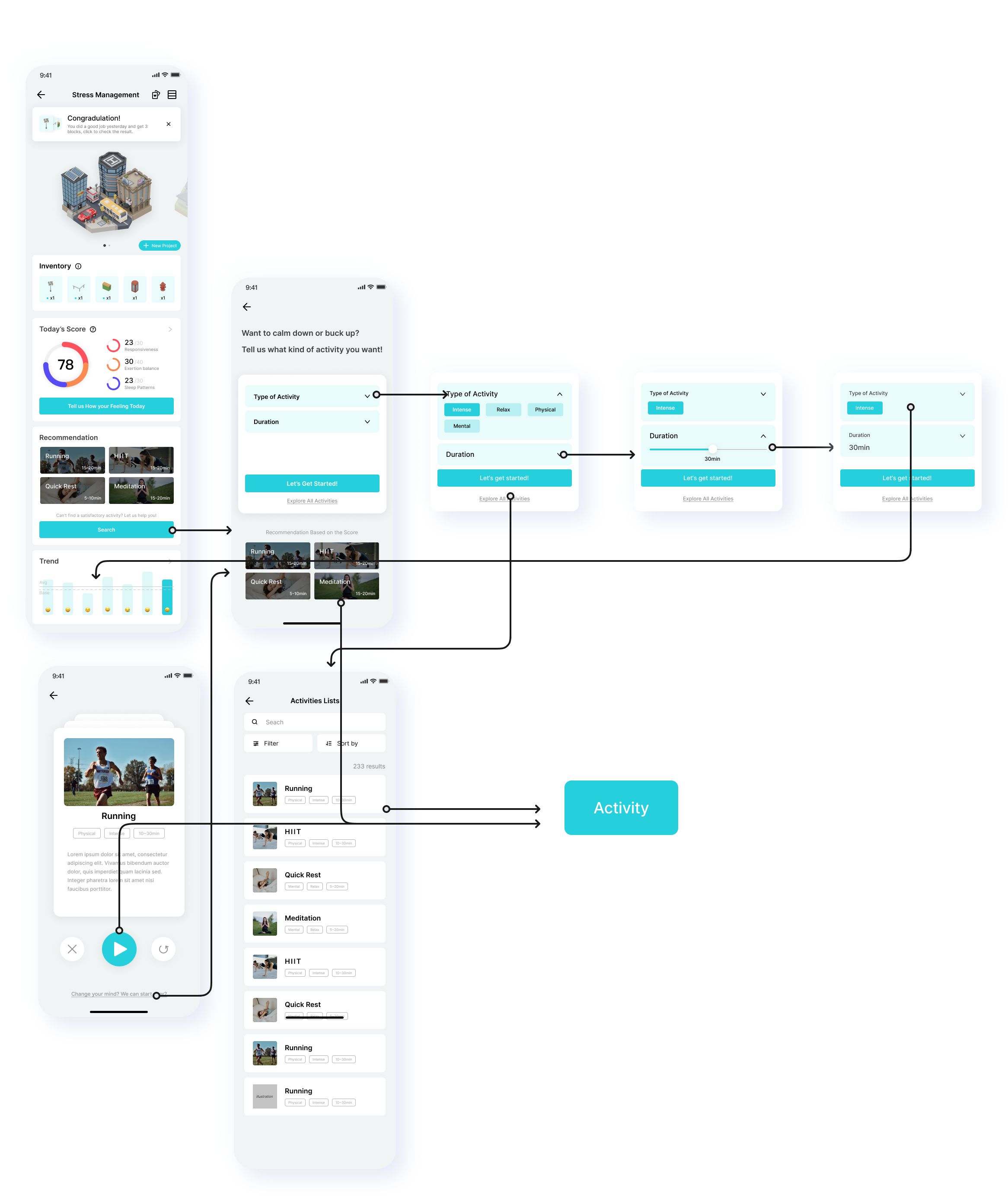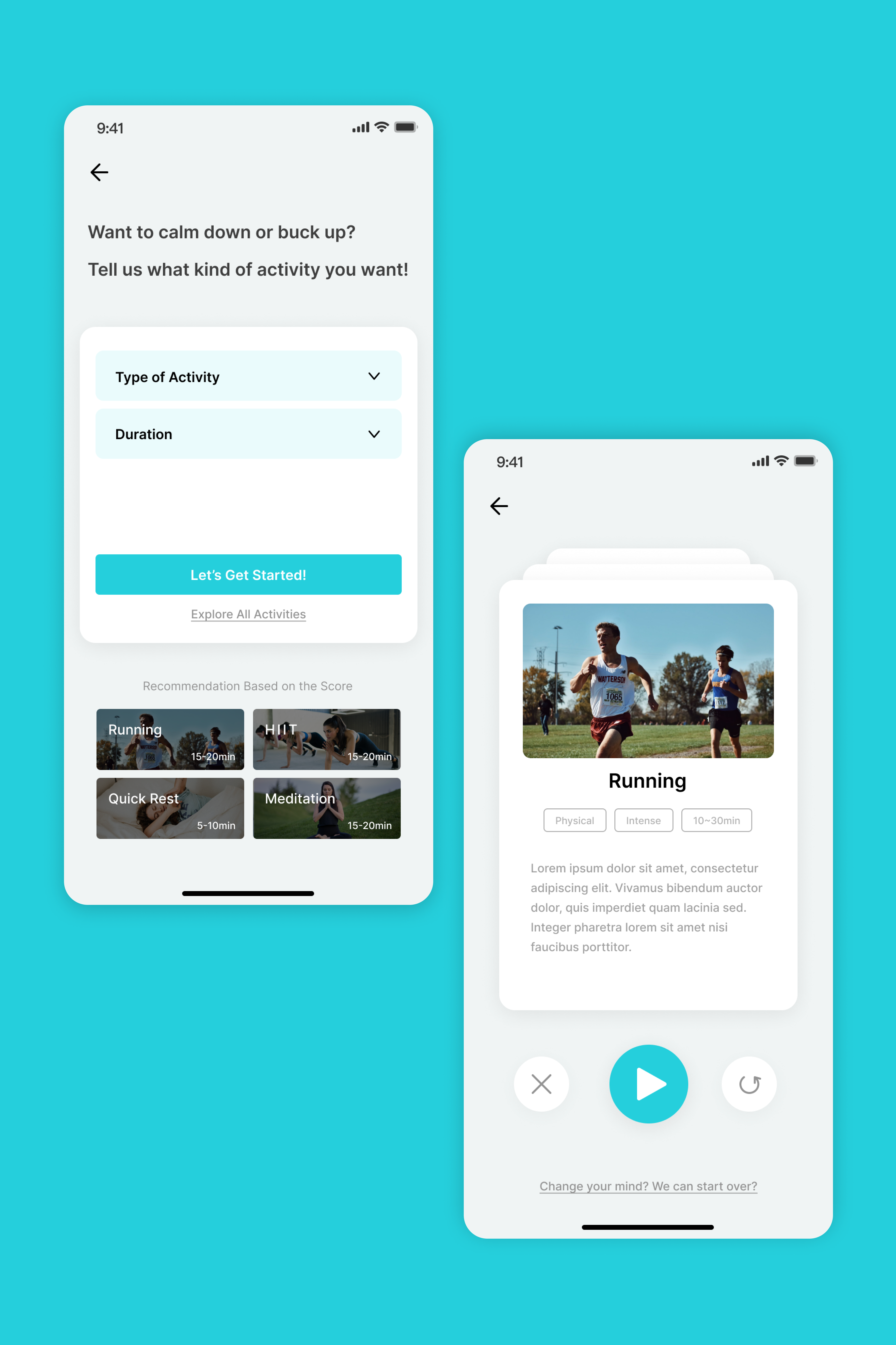

We were given an open brief to identify and solve for a problem, within the space of functions in Fitbit. This design challenge focuse on the behavioral change of customers of Fitbit.
Jan 2022- Feb 2022
4 graduate students
Product designer
Stress affects our mood, energy level, relationships, and work performance, stress can also cause and exacerbate a wide variety of health conditions.
Today, much of the stress we experience is manufactured in our minds. We perceive a threat (loss of job, anger from spouse, not meeting a deadline) and we begin to worry. That’s why we want to help people deal with stress and manage their stress.
Use gamification to help people view stress in the right way. "Build Cities" to guide people to set goals, and "exercise, meditation, etc." to help people relieve stress and maintain stress levels in general.

Stress is a natural human response and we try to help people to be able to face stress and accept it.










Fitbit as a Butler to provide detail advice based on the score

Fitbit as a square is an open space for communications and activities related to stress solving.

Fitbit acts as an alarm, contacting users only when their stress status breaks their bottom line.

Fitbit serves as a library where people can pick up what they like to actively manage their stress

Summary - Fitbit as a quiet companion
In the concept relay, we generated a lot of promising and attractive ideas. Based on our design framework and the relevance of each idea, we finally decided to define Fitbit as a quiet companion.
It is no longer a noisy mentor or an indifferent alarm clock. It is more like a little companion that we grew up with, witnessing our growth, our joys and sorrows, our pains and achievements. It will not be like our boss, telling us what is wrong and what we should do, it will only support us silently behind the scenes and provide the necessary help when we need it.
Based on the features described above, our wireframe is divided into these sections - Home, Collection, Daily Mood, Daily Score, Find Activity, and Popular. The overview of the wireframe is presented as below.

After we created the wireframes, we did a quick cognitive walkthrough within the group and we found that the overall design and process worked well for experienced users, but could be difficult for first-time users because it lacked guidance.
Therefore, in our high-fidelity prototype, we included onboarding as one of the main processes.



Stress Score
With the integrated EDA function, Fitbit can detect user's daily stress score.
Instead of showing users all the data, we prefer to tell them what they should be aware of.

Construct a Building
2 or 3 blocks for the users everyday if their stress score is higher than the baseline.
Monthly building for the users.

Start Building
Users can create a new (Project) building based on their periodic goals.
In the collection, all buildings completed by the user are displayed here in a variety of ways
· City
· Diary (Timeline)
· Gallery

Quick Pick Activities
Users only need three clicks to find suitable ways to relieve stress.
Tinder-like swipe to select activities.

Conduct a usability test and heuristic evaluation with four participants to test our prototype.
Use the prototype of a stress management function to test if people could complete various tasks using our new features.
Observe people navigating our application to “Create My City” and “Pick one activity to start building cities”.
In addition, we also asked if people could understand the way our charts were presented.
Here is the feedback we get from users.



According to the feedback “the last step doesn't have enough feedback”, “Where is my city after I finish my activity?”, we may change the flow of “Create My City” and show people the city they build after they complete their activities.
According to the feedback “Button is overlapping”, we may provide different ways for people to approach their activities and manage stress. In addition, we will also make it easier for people to understand.
According to the feedback “Too complicated, I lost patience. I don't know if the picture can interact or not”, we may make it easier for people to navigate between different tasks so that they do not lose their patience.